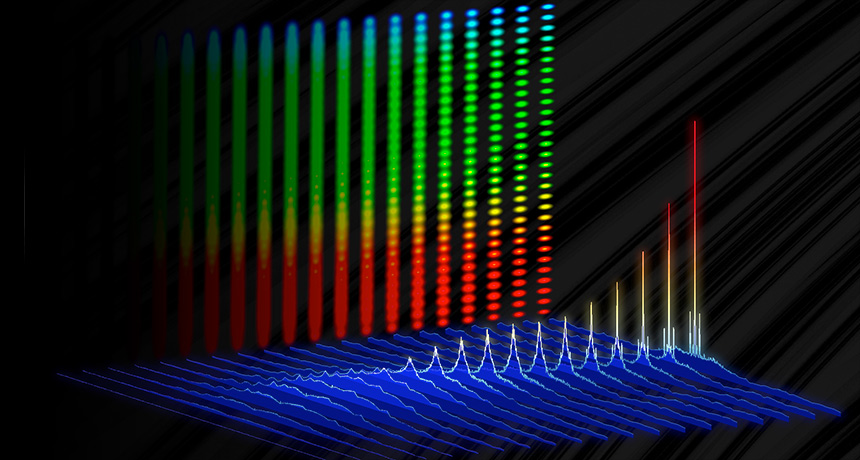
FINE-TOOTH COMB An ultrafast laser pulsates faster than any of its predecessors. The new device isolates light of particular frequencies (peaks in blue curves) to create a frequency comb made up of discrete colors of light (vertical bands). Scientists had to eliminate jitter in their experiment to make the comb (progression left to right).
D. Carlson/NIST







